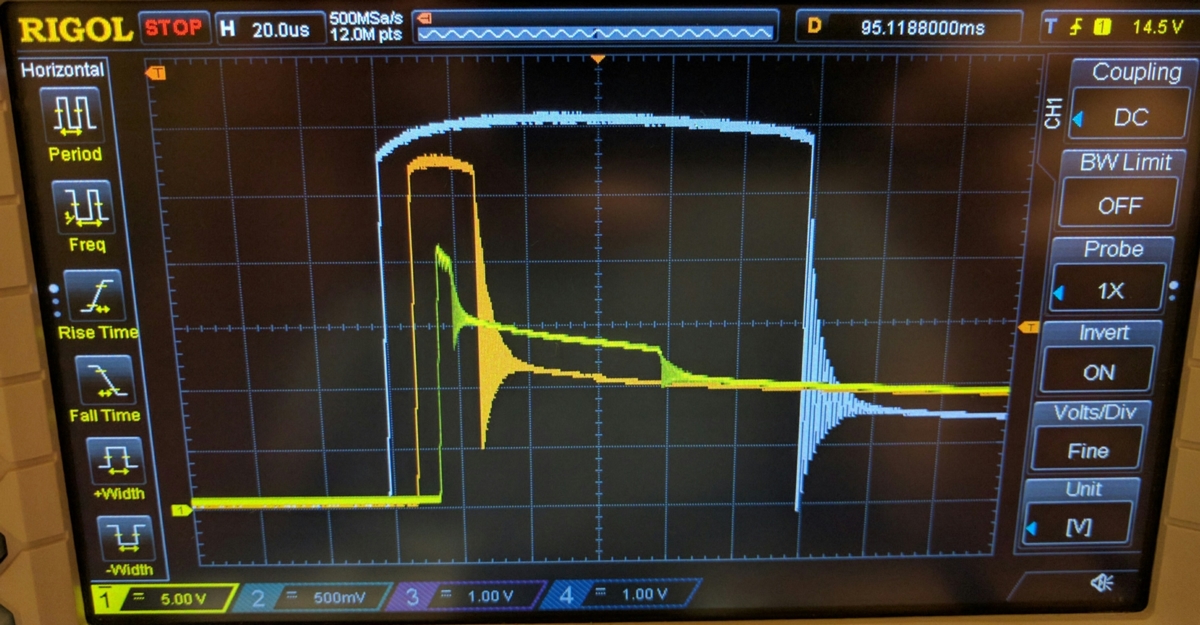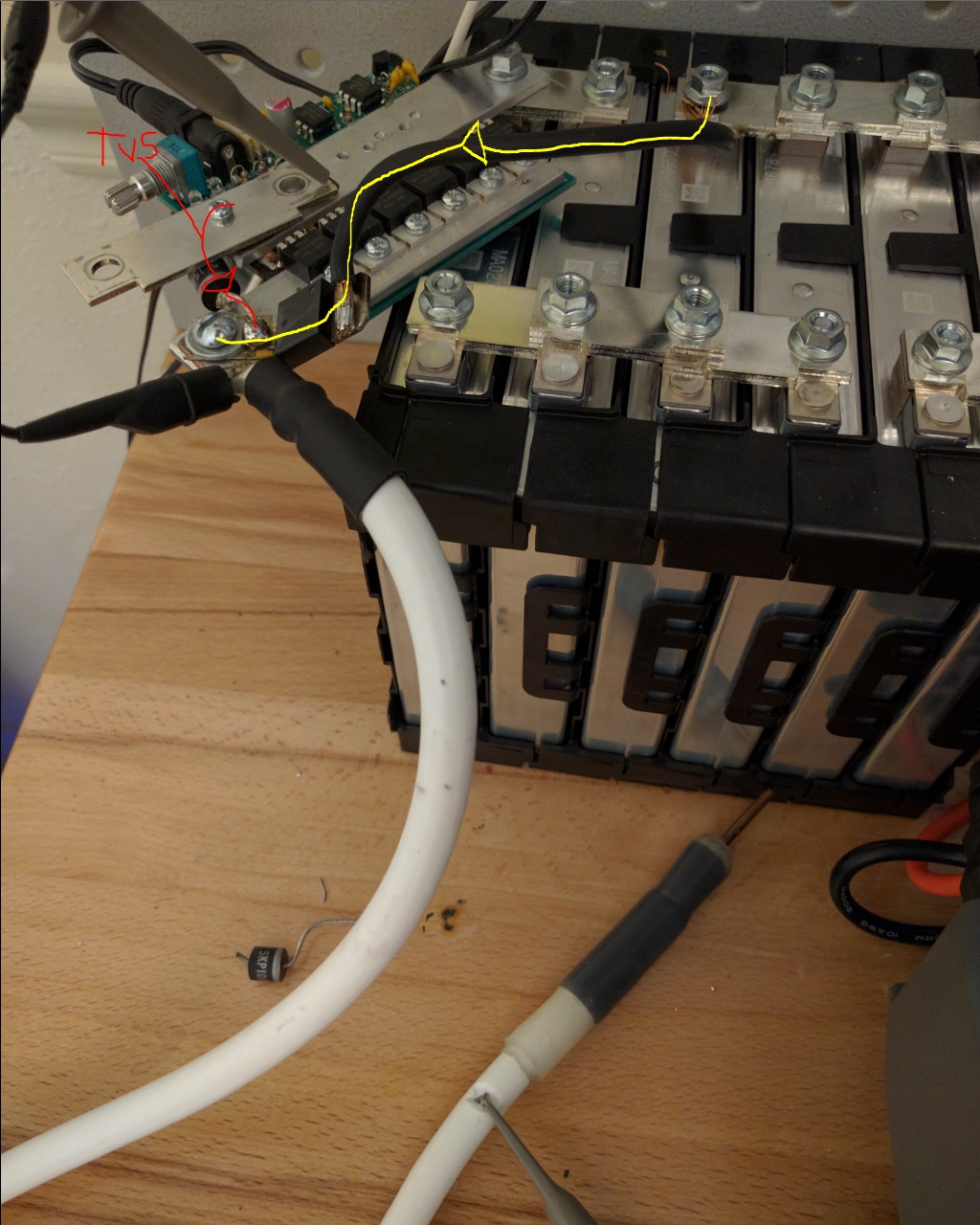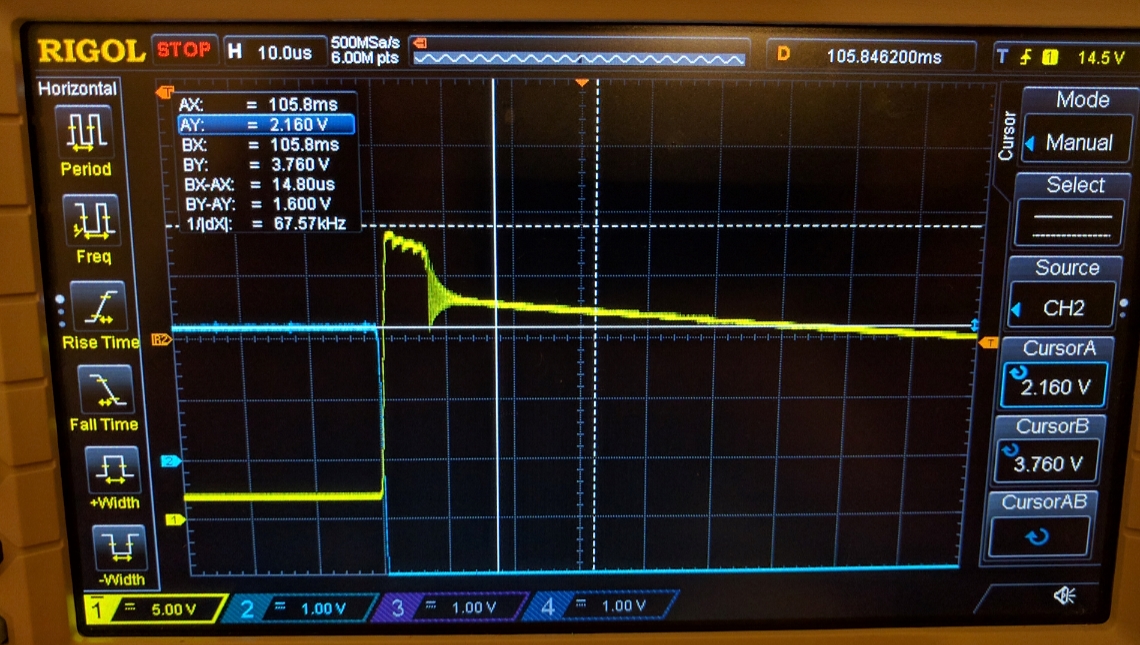okashira
10 kW
Doctorbass said:Q1: What's the best electrode material for spotwelding copper sheet?
i have about 10 sq ft of 99.99% pure 0.005" copper.. for using with that tool. i preffer copper over the nickel for my high current use.
I guess sthat copper probe with copper material is not the best idea... :lol:
I tought about tungsten probe?
My setup should have 2.6 farads of very low esr caps.. total should be less than 150microohms.
Q2: I also Wonder whats the best voltage to go... 12V seem the rule now.. but increasing volt a bit crank up the joules alot! so.. i guess the max volt the Jp spotwelder can do is 16V according to the caps as i've read?
Thanks all for answer Q1 and Q2.
Doc
1.) dont do it
2.) you can experiment. 12v would be a good starting point.
You can go all the way to ~24V. The fets will last longer using caps and can handle higher voltage because the current will taper to zero by the time the pulse finishes, thus the current will be very slow at mosfet turn off (which is when they are damaged). The downside of caps is the current is not continuous or smooth, inferior welding performance due to the high current peak at start





